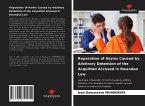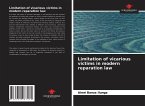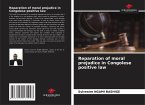The positioning of victims in the international normative framework has meant that States Parties to the Inter-American Human Rights System have had to adopt public policies that guarantee and restore the rights of victims. Thus, the main purpose of this paper is to establish the most effective mechanism for comprehensive reparation for the victims of the internal armed conflict. Thus, firstly, the comprehensive reparation system contained in Law 1448 of 2011, which contains provisions in favour of the victims of the internal armed conflict, is described. Then, it explains the reparation system that makes up the Inter-American Court of Human Rights and determines its effectiveness in restoring the rights of the victims of the internal armed conflict. Finally, it identifies the substantial differences between the comprehensive reparation system contained in Law 1448 of 2011 and the system established by the Inter-American Court of Human Rights.
Bitte wählen Sie Ihr Anliegen aus.
Rechnungen
Retourenschein anfordern
Bestellstatus
Storno








